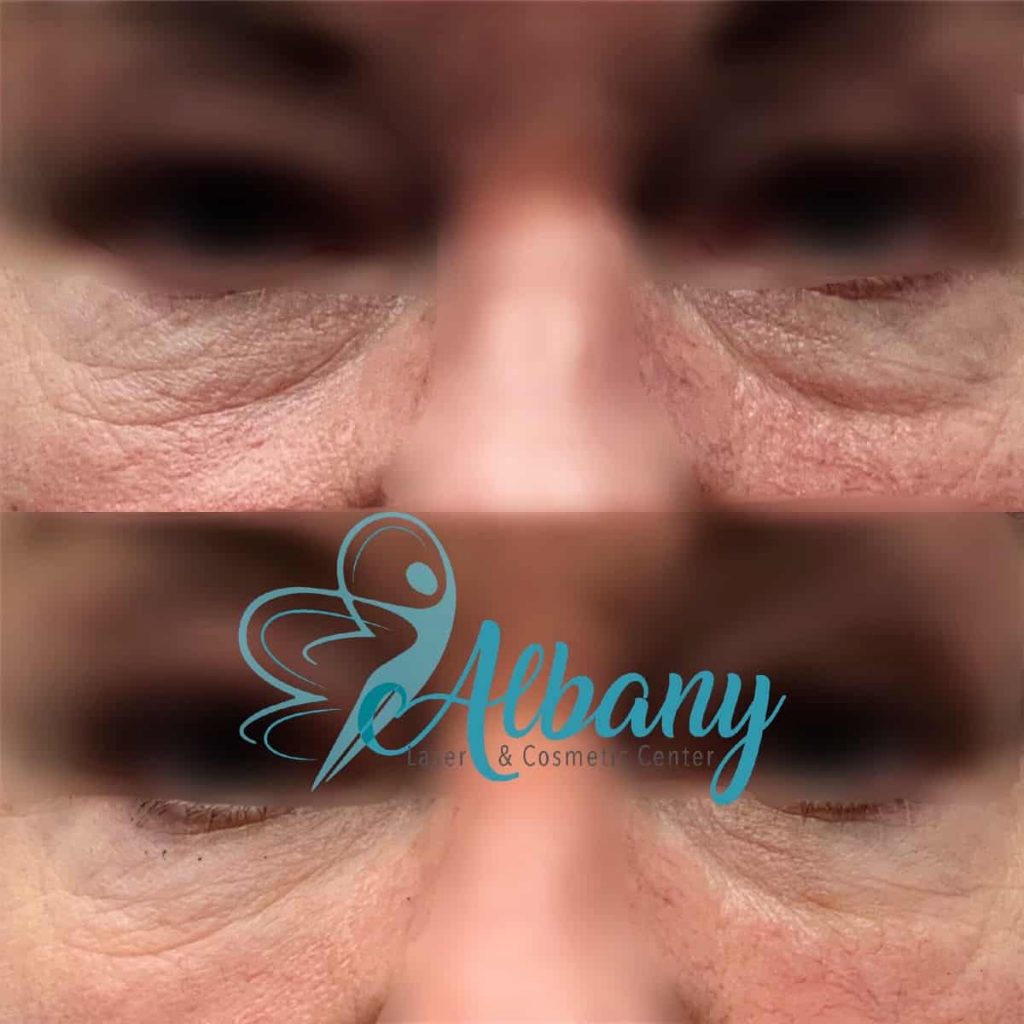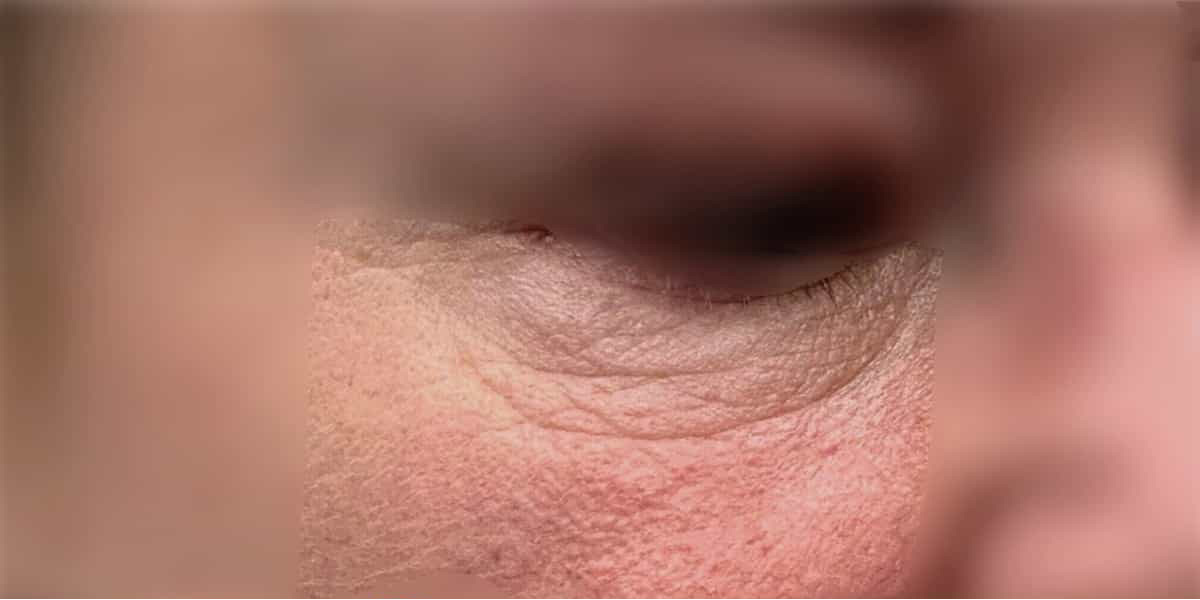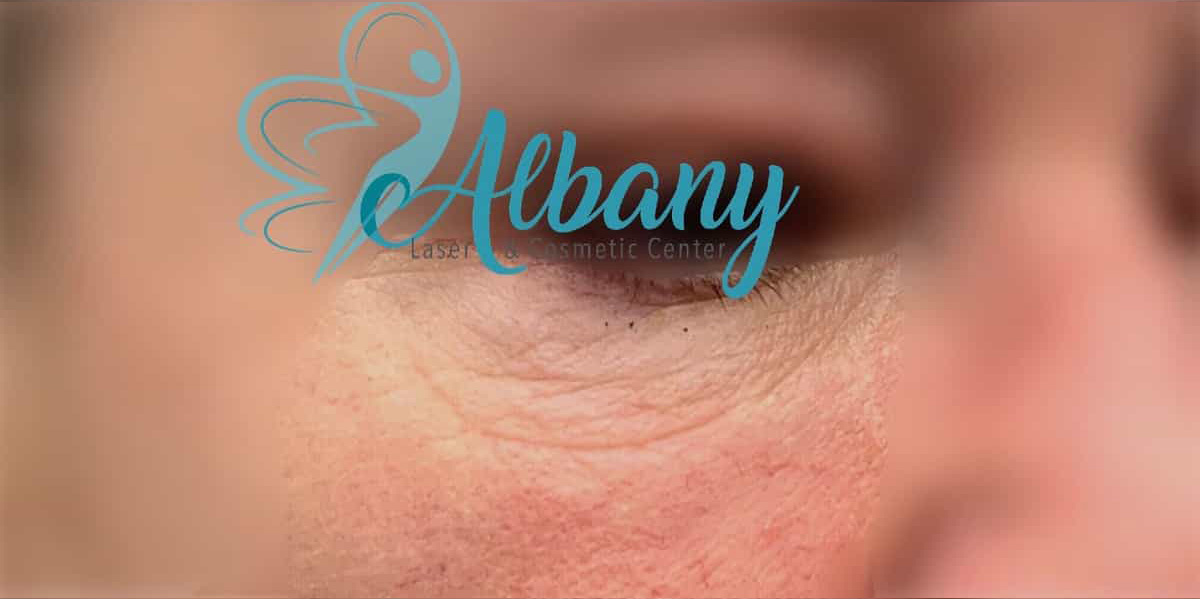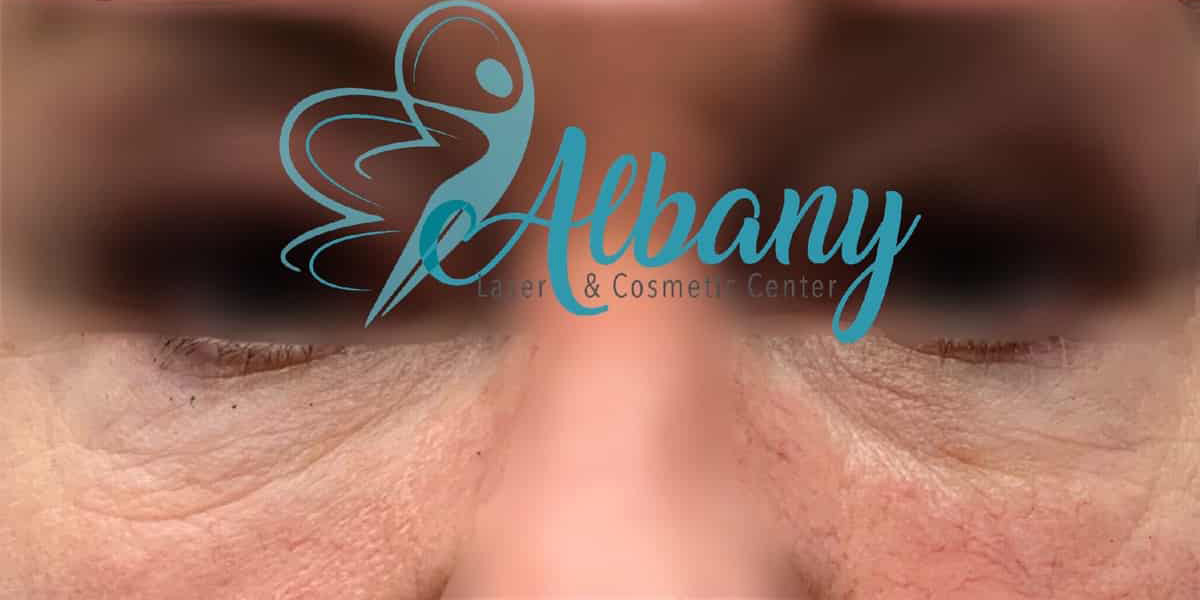Why do we use under-eye fillers?
Fillers are gel-like substances injected into the skin to add volume where it has been lost. They are also called “dermal fillers” or “dermal volumizers.”
We use under-eye filler to correct many cosmetic issues, including wrinkles and bags under the eyes. The treatment consists of placing fillers in the tear trough or under the eyes.
The filler isn’t going to correct pigmentation. Filler will alleviate dark circles if they are caused by the increased pigment in the skin, which occurs quite often in people with darker skin tones.
Studying the case
In this case, a woman in her 50s with wrinkles on her face and dark spots around her eyes is the main character. After getting her full medical history and a photo, we moved on to the full consultation and discussed the options. However, she decided to go with the under-eye fillers.
The procedure of under-eye fillers
R.N. Dima Omran administered the Juvederm Volbella HA fillers using a 25g blunt cannula, using the chiller distracting method.
Results of under-eye fillers
We took The following pictures about eight months after the treatment.
To view more cases, click here.
Downtime
The patient will have bruising and swelling for 72 hours after the fillers.
under-eye filler under-eye bags Dr. Kamal Alhallak (Ph.D.)






